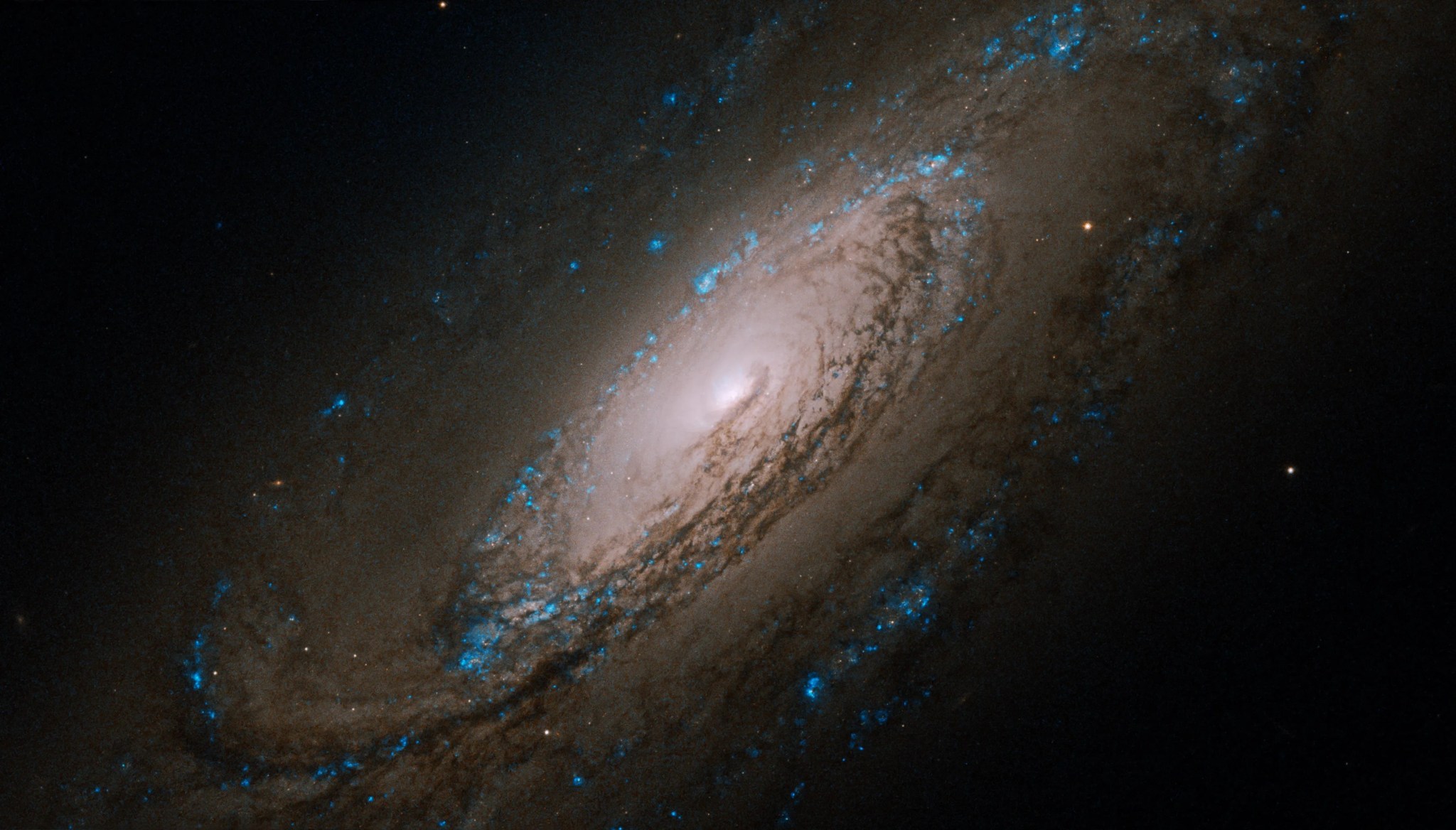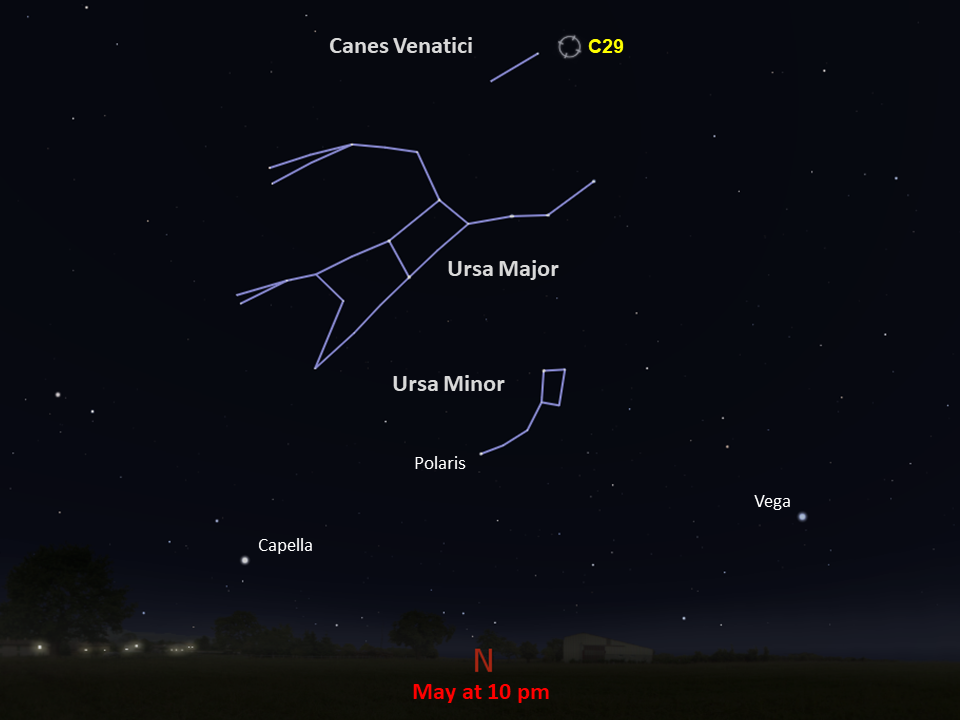Caldwell 29
You can spot this spiral galaxy's bright core in most backyard telescopes.
Distance
75 million light-years
Apparent Magnitude
9.8
constellation
Canes Venatici
object type
Spiral Galaxy
Caldwell 29, also known as NGC 5005, is a spiral galaxy that likely harbors a supermassive black hole at its heart. The galaxy has a feature called a low-ionization nuclear emission-line region (LINER) nucleus, which means the gas at the center of the galaxy is emitting light at certain wavelengths that indicates a source of energy is removing electrons from the atoms in the gas (“ionizing” it). While a few different energy sources could be responsible for causing this emission, some of the most common are supermassive black holes or star-forming regions containing very hot young stars. Infrared observations by telescopes like Hubble have revealed that the stars in most nearby LINER galaxies are generally old, and X-ray observations of Caldwell 29 have revealed strong emission in the galaxy’s nucleus. This suggests that young stars may not be the ionizing energy source for galaxies like Caldwell 29, and that a supermassive black hole is the more likely culprit.
Caldwell 29 was discovered by the British astronomer William Herschel in 1785. It can be spotted with a small telescope in the constellation Canes Venatici. Although small and faint, with an apparent magnitude of 9.8, the galaxy has a compact core that makes it easier to spot than larger, brighter galaxies whose light is more spread out. It is located near another spiral galaxy, NGC 5033, and the two can be observed together with a wide field of view. Caldwell 29 is located roughly 75 million light-years from Earth. It can be observed during the Northern Hemisphere’s spring and from northern latitudes of the Southern Hemisphere during the autumn.
This image of Caldwell 29 is a composite of visible and infrared observations by Hubble’s Advanced Camera for Surveys. The observations were taken to help astronomers better understand the relationship between the mass of black holes at the centers of galaxies and the structural properties of the galaxies in which they reside.
Glossary
Apparent Magnitude - The brightness of an astronomical object as seen from Earth, influenced by the object's distance from Earth, its absolute magnitude, and even gas and dust that lie between the object and Earth.
Ionization - The process by which particles become electrically charged; radiation from various astronomical sources, such as stars, can charge surrounding gases with electromagnetic radiation, causing these clouds of gas to glow.
Spiral Galaxy - A galaxy characterized by its spiral structure, with star-filled arms that extend out from the center of the galaxy and host regions of star formation.
Supermassive Black Hole - A black hole millions or billions of times more massive than the Sun, typically residing at the center of a large galaxy.
Explore Hubble's Caldwell Catalog
The following pages contain some of Hubble’s best images of Caldwell objects.
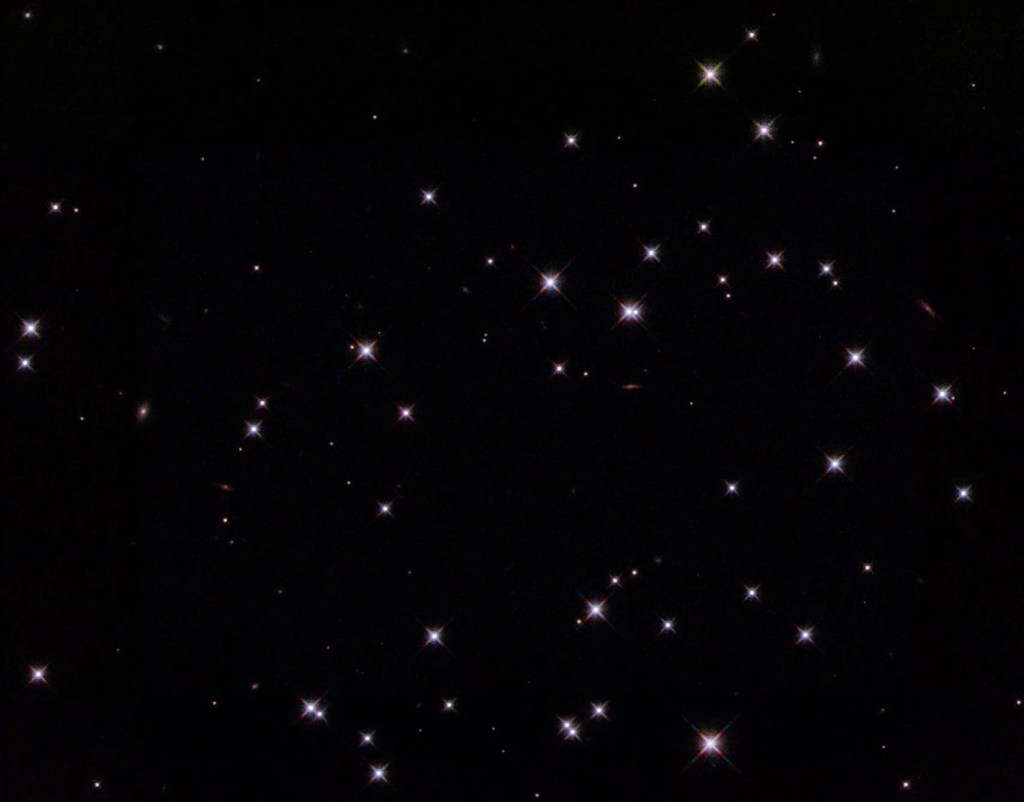
Also known as NGC 188, this group of stars formed from a large cloud of gas making the stars roughly…
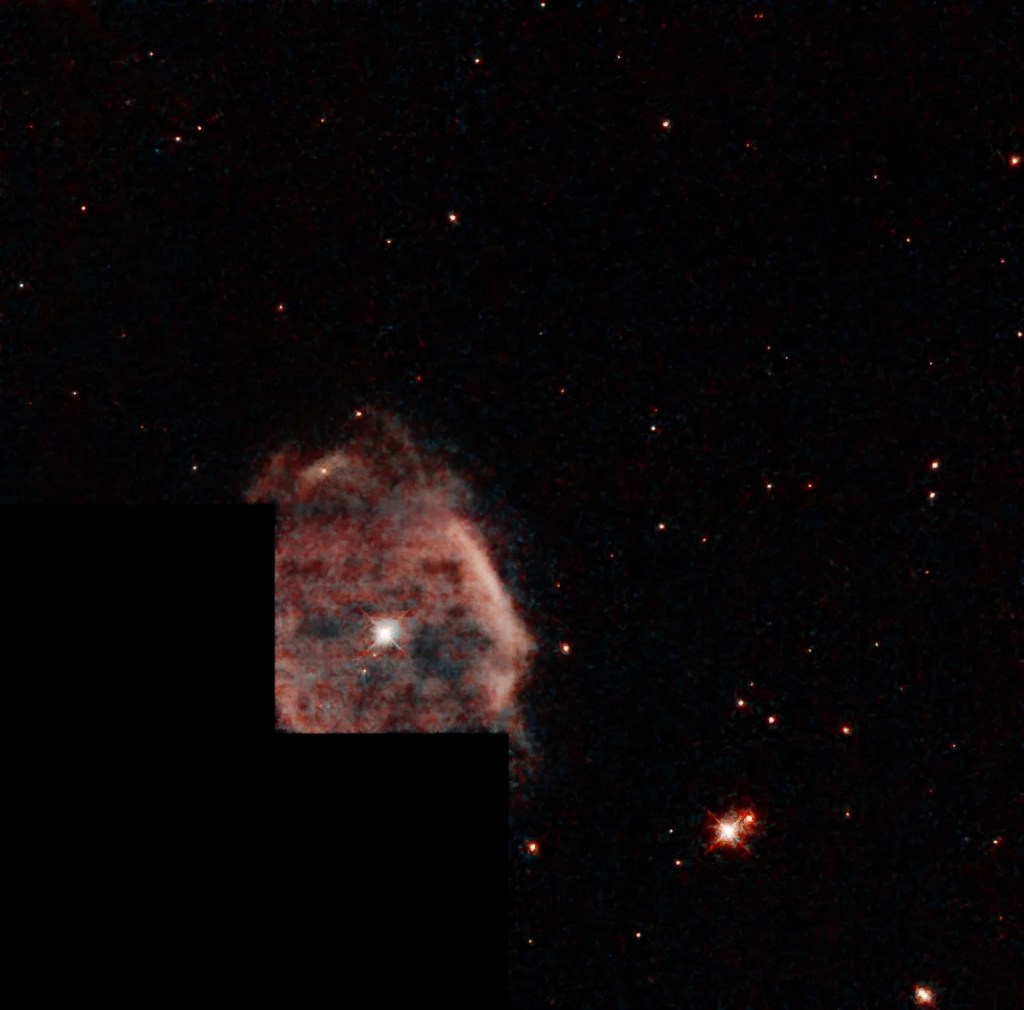
This shell of gas is expanding outward, away from the dying star within.
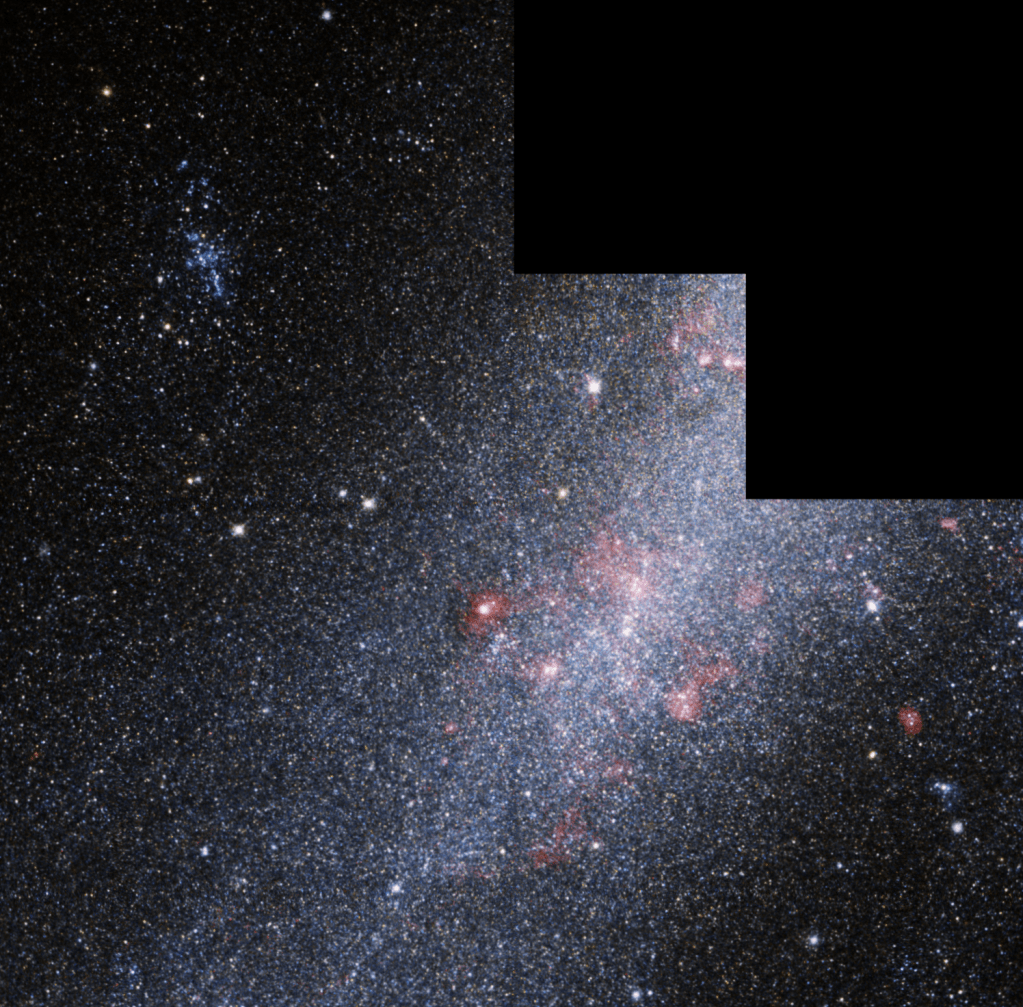
This barred spiral galaxy was first spotted by British astronomer William Herschel in April 1793 in the constellation Draco.



























